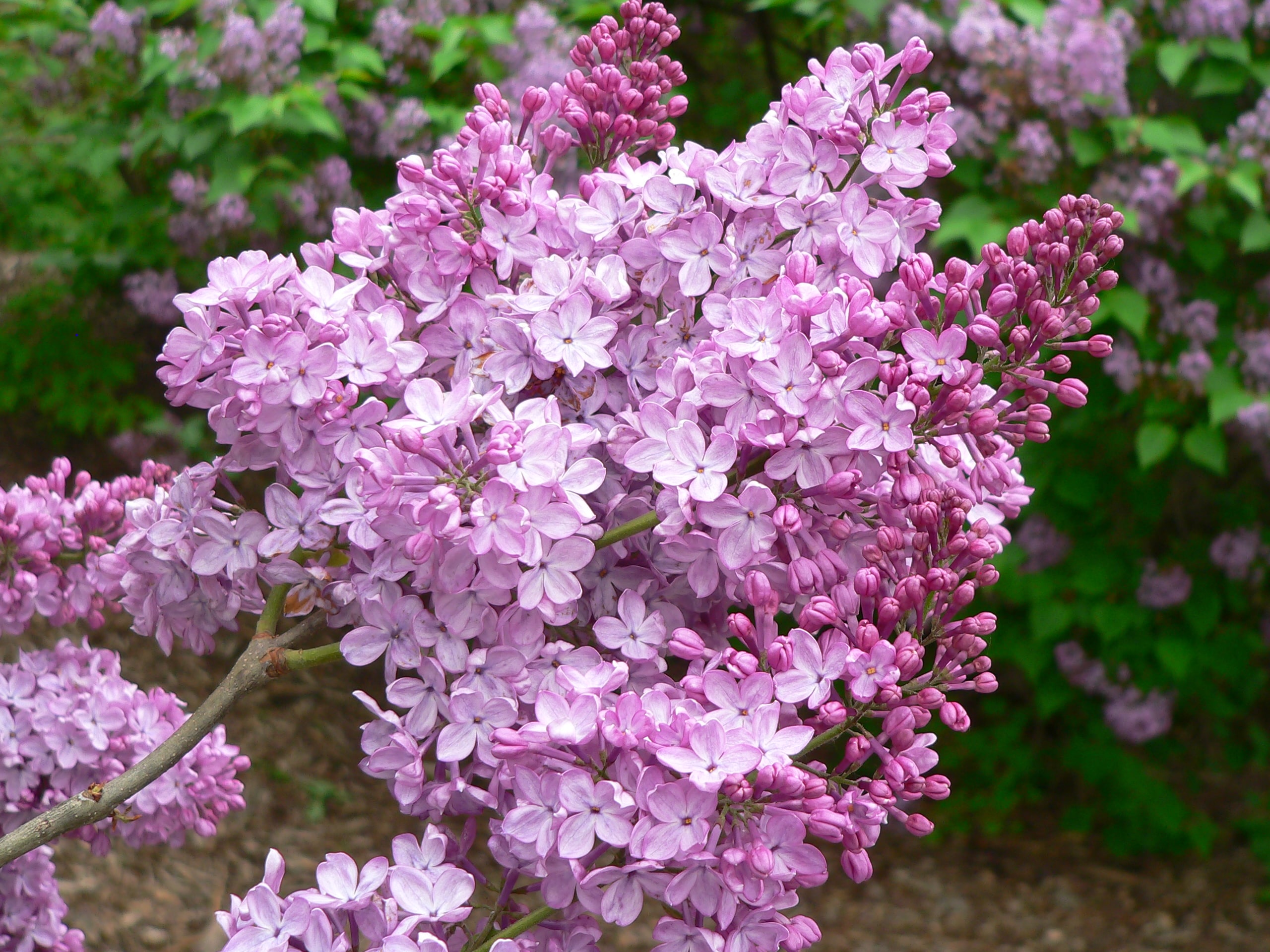Lilacs are beloved for their fragrant blooms and hardy nature, making them a popular choice for gardens. However, even these resilient plants can fall victim to pests and diseases. So, do lilacs need pest control? The short answer is yes—while lilacs are generally low-maintenance, they can still be affected by common garden pests that may hinder their growth and flowering.
Pests such as lilac borers, aphids, and scale insects can weaken the plant’s structure, reducing its vibrancy and ability to bloom. Understanding what pests attack lilacs, how to recognize them, and the best control methods can help gardeners maintain healthy, thriving plants year-round. With the right strategies, you can protect your lilacs from unwanted invaders and ensure they remain a highlight in your garden.
Common Pests That Affect Lilacs
Lilacs are generally hardy plants, but they are not completely immune to pests. Some insects can cause significant damage if left unchecked, weakening the plant and reducing its ability to bloom. Here are some of the most common pests that can affect lilac bushes:
- Lilac Borers: These larvae tunnel into branches, causing wilting and dieback, which can significantly weaken the structure of the plant.
- Aphids: Tiny insects that suck plant sap, leading to curled leaves and stunted growth. They also excrete honeydew, which attracts mold.
- Scale Insects: Hard-shelled pests that attach to stems and weaken the plant over time by draining essential nutrients.
- Spider Mites: These microscopic pests create fine webbing and suck the juices from leaves, often leading to yellowing and premature leaf drop.
|
Pest Name |
Prevention and Solution |
|
Lilac Borers |
Prune infested branches, encourage natural predators, and apply neem oil or targeted insecticides |
|
Aphids |
Introduce ladybugs, spray with insecticidal soap, or use neem oil. |
|
Scale Insects |
Scrape off manually, apply horticultural oil, and encourage beneficial insects. |
|
Spider Mites |
Increase humidity around plants, spray with water or neem oil, and use predatory mites. |
If left untreated, these pests can weaken lilacs, reducing their lifespan and beauty. Proper pest control measures can help prevent significant damage, ensuring that your lilacs remain strong and healthy.
Signs That Your Lilacs Need Pest Control
Keeping your lilacs healthy requires regular observation. While they are naturally resilient, lilacs can exhibit subtle signs of stress when under attack by pests. Identifying these signs early on can prevent minor issues from escalating into severe infestations.

Many pests, such as aphids and spider mites, can spread quickly, damaging the plant’s foliage and reducing flower production. Similarly, borers and scale insects weaken stems, affecting the lilac’s structural integrity. If you notice any of the following symptoms, taking prompt action will help restore your plant’s vitality.
- Wilting or yellowing leaves: This can indicate sap-sucking pests or disease.
- Holes or tunnels in branches: A sign of lilac borers that weaken the plant from the inside.
- Sticky residue (honeydew) on leaves from aphids: This can lead to mold growth, further harming the plant.
- Fine webbing on the undersides of leaves: Often a sign of spider mites, which are hard to detect without close inspection.
If you notice any of these symptoms, it’s time to take action. Early intervention can save your lilacs from severe damage and promote long-term health.
|
Sign |
Possible Cause |
Solution |
|
Wilting or yellowing leaves |
Sap-sucking pests like aphids or disease. |
Introduce natural predators like ladybugs and apply neem oil. |
|
Holes or tunnels in branches |
A sign of lilac borers weakening the plant from the inside. |
Prune affected branches and use insecticidal sprays if necessary. |
|
Sticky residue (honeydew) on leaves |
Indicates aphid activity, which can lead to mold growth. |
Wash leaves with water and apply insecticidal soap. |
|
Fine webbing on the undersides of leaves |
Often a sign of spider mites, which are hard to detect without close inspection. |
Increase humidity around the plant and spray with neem oil. |
Best Companion Plants to Deter Lilac Pests
Companion planting is an effective way to naturally protect lilacs from pests. Certain plants repel harmful insects while enhancing the overall health of your garden. Here are a few excellent companion plants for lilacs:
- Marigolds: Their strong scent deters aphids and other pests.
- Garlic & Chives: Natural insect repellents that help ward off lilac borers and aphids.
- Lavender: Repels moths and other insects while adding fragrance to your garden.
- Catnip: Deters aphids and spider mites effectively.
Planting these companions around your lilacs can help reduce pest populations naturally while adding beauty and diversity to your garden.
How to Prevent and Treat Pests on Lilacs
Prevention is always better than cure when it comes to plant care. While lilacs may require pest control in certain situations, there are many ways to manage and prevent infestations naturally and effectively.
1. Encourage Natural Predators
A balanced ecosystem in your garden can help prevent pest infestations. Ladybugs, lacewings, and parasitic wasps help control aphid populations. Planting companion plants that attract these beneficial insects can keep pests in check without resorting to chemical treatments.
2. Prune Regularly
Pruning is one of the simplest and most effective ways to keep lilacs healthy. Trimming dead or weak branches improves air circulation and removes potential breeding grounds for pests like lilac borers. Be sure to use clean, sharp pruning shears to avoid spreading disease.
3. Use Organic Pest Control Methods
If pests become a problem, try organic methods before reaching for chemicals. Neem oil, insecticidal soap, and horticultural oils are effective natural remedies that can eliminate pests without harming beneficial insects. These solutions also minimize harm to the surrounding environment.
4. Maintain Proper Watering and Fertilization
Healthy lilacs are more resistant to pests and disease. Avoid overwatering, which can lead to fungal diseases, and provide balanced fertilizers to strengthen your plants. A nutrient-rich soil base will support robust growth and natural pest resistance.
5. Apply Chemical Treatments as a Last Resort
For severe infestations, targeted insecticides can be used. Always choose eco-friendly options and apply them according to manufacturer instructions to minimize environmental impact. Avoid spraying during peak pollination times to protect bees and other beneficial pollinators.
How to Keep Lilacs Healthy Year-Round?
A well-maintained lilac bush is less likely to succumb to pests. Here are some general care tips to ensure strong, thriving plants:
- Provide Full Sunlight: Lilacs need at least six hours of sunlight daily to grow properly.
- Ensure Good Air Circulation: Crowded branches create a damp environment where pests and diseases thrive.
- Monitor Soil Conditions: Lilacs prefer well-drained soil with moderate moisture levels.
- Mulch to Retain Moisture: Organic mulch helps retain moisture while suppressing weeds that compete for nutrients.
With these maintenance strategies, your lilacs will remain resilient against pests and other environmental stressors.
Can Pest Problems Be Avoided Completely?
While no plant is entirely pest-proof, consistent care and early detection can significantly reduce the risk. Gardeners who regularly inspect their lilacs and implement preventative measures often find that their plants remain healthy and pest-free. By integrating good gardening practices, you can minimize the likelihood of pest infestations before they become a major issue.
FAQs
1. Are lilacs prone to pests?
Lilacs are relatively resistant to pests but can occasionally be affected by aphids, lilac borers, and scale insects. Regular maintenance can help keep them healthy.
2. What is the best natural remedy for lilac pests?
Neem oil and insecticidal soap are effective organic treatments for common lilac pests. Introducing natural predators like ladybugs can also help keep infestations under control.
3. How often should I check my lilacs for pests?
It’s best to inspect lilacs at least once a month, especially during the growing season. Early detection helps prevent serious infestations and ensures your plants stay vibrant and strong.

